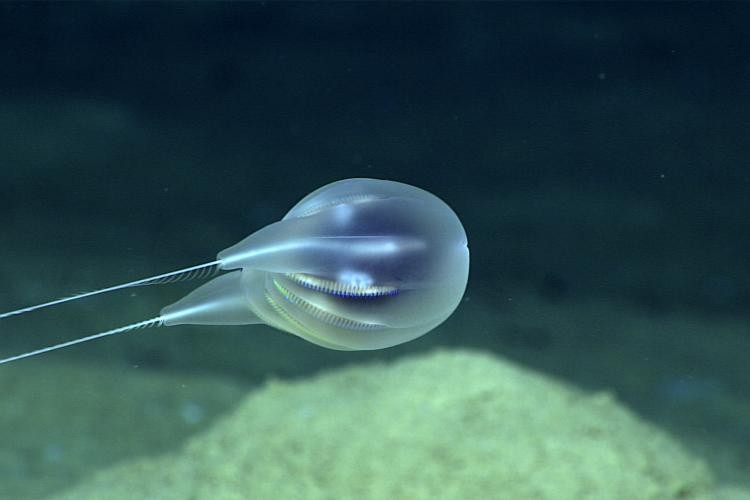
Scientists from the National Oceanic and Atmospheric Administration Fisheries (NOAA) Fisheries research team virtually discovered a new comb jelly species near Puerto Rico.
First seen during a 2015 underwater expedition, the newly-named Duobrachium sparksae, is a new species of benthopelagic ctenophore, a marine invertebrate characterized by a series of vertical ciliary combs.

The Deep Dive
The NOAA ship Okeanos Explorer ventured on a deep-sea mission to navigate the ecosystems and seafloor in the vicinity of Puerto Rico and the U.S. from April 9 to 30, 2015. The NOAA scientists explored the waters through a remotely operated vehicle (ROV) and documented their findings using a high-definition camera.
Three individuals of this gelatinous species were discovered two and a half miles below sea level. They were found moving above the Arecibo Amphitheater's seafloor, which is inside the Guajataca Canyon.
This is the first time a new species has been identified using only an HD video. The scientists could not gather samples of the animal as the ROV did not have sample collection capabilities.
Gelatinous animals also do not preserve very well, so processing the animal would still be challenging even if the scientists had equipment. The only evidence of the discovery was the video captured by the camera on the Deep Discoverer robot.
The high-resolution images and videos provide scientists with sufficient information to understand the new species' morphological details.
READ : Scientists are Baffled by Origin of New Species of Red Algae Threatening Coral Reefs of Hawaii
The New Species
Mike Ford and Allen Collins, both NOAA Fisheries scientists, recognized the animal creature as a new type of comb jellyfish while observing the videos from their shoreside control room.
Although the naming of organisms is guided by international code, Ford said some changes had allowed descriptions of new species based on videos, particularly on rare species when a collection of samples is impossible.
Despite its name, the newly-discovered ctenophore is not related to jellyfish. The species is carnivorous, preying mainly on small arthropods and many kinds of larvae. Most comb jellies have eight rows of comb-like cilia that beauty rhythmically as they paddle through the water.
It has distinctive features, having two prominent tentacle arms. Its body is rectangular when observed laterally along the tentacular plane and rounded when viewed laterally along the stomodeal plane.
Scientists also noted some interesting movements based on video evidence. The ctenophore moved like a hot air balloon attached to the seafloor on two lines. It also maintains a specific altitude above the seafloor.
Information on the new species is still limited now, so scientists are uncertain of its role in the ecosystem. Considering its similarities with other ctenophores, it may have similar roles as ctenophores near the ocean floor and open ocean areas.
Exploring the Rich, Uncharted Seafloor
The waters of Puerto Rico and the U.S. Virgin Islands feature-rich trenches, seamounts, submarine canyons, troughs, and valleys. They offer a unique diversity that offers valuable and vulnerable ocean resources.
The region is also in a complicated location where the North American Plate slides obliquely underneath the Caribbean Plate.
As most of the ocean remains unexplored, underwater expeditions are important missions to increase ocean habitats' baseline knowledge. Such explorations also provide extensive opportunities to understand various remarkable ecosystems and how to preserve them.
The videos captured during the water expedition are publicly accessible as they are now part of the Smithsonian National Museum of Natural History Collection.
Check out more news and information on Animals on Nature World News.
© 2025 NatureWorldNews.com All rights reserved. Do not reproduce without permission.





